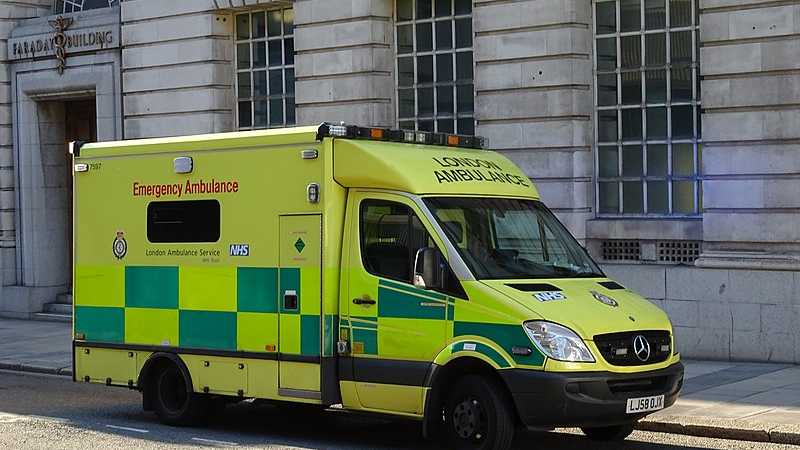In the past year, over 850 patients with serious illnesses or injuries experienced waits of an hour or longer for an ambulance. Alarmingly, one critical case endured a wait time exceeding three hours and 15 minutes.
According to data from the National Ambulance Service, the counties with the most significant ambulance delays in urgent emergency response times between July and December 2023 were Cork and Wexford.
Even so, the ambulance service noted that it came close to meeting its response time targets for the most urgent calls, including life-threatening situations such as cardiac or respiratory arrests.
Ambulance delays under scrutiny
Information obtained under the Freedom of Information Act shows that over the last six months of 2023, there were 732 cases where ambulances arrived between one to one and a half hours late. Moreover, another 110 emergency calls experienced delays of up to two hours.
Response times for an additional 20 calls considered Red, which encompass life-threatening situations aside from cardiac and respiratory arrest, ranged between two to three hours.
In two significant emergencies, one occurring in Carlow and the other in Wexford, patients had to endure a wait of over three hours for ambulance assistance. Specifically, in Carlow, the recorded wait time was three hours, 15 minutes, and five seconds.
The National Ambulance Service clarified that some of these extensive delays could have stemmed from calls that were initially deemed lower priority but later necessitated an upgrade as the situation worsened. However, they noted that pinpointing the exact instances where this re-prioritization occurred is challenging, which could account for some of the prolonged response times.
Cork experienced the highest delay in ambulance response times, with 118 out of the 864 instances, accounting for nearly 14%. This significant number is likely attributed to Cork’s large geographic area. In comparison, Wexford registered 96 emergency cases where patients waited over an hour.
Several counties reported significant delays in ambulance response times, with Donegal experiencing 61 cases, Tipperary at 58, Waterford with 49, and Mayo recording 46 instances of waits longer than an hour.
These counts are particularly notable given the large geographical size of these regions. Conversely, counties with the fewest delays included Longford with 5 cases, Sligo with 4, and Westmeath encountering only 7 incidents where response times exceeded one hour.
In major urban areas, delayed ambulance responses were particularly noticeable. Limerick had 37 incidents where patients waited over an hour for assistance, while Galway reported 23 such cases. Dublin experienced 16 cases, though this figure could be an underestimation because the fire brigade, in addition to the NAS, also provides ambulance services in the city.
According to a NAS memo, the national targets set a response goal of 75% for Purple calls within 19 minutes and 45% for Red calls within the same timeframe. In August and October last year, NAS impressively met their 75% target for Purple calls and maintained over 70% success in five of the six recorded months.
By September 2023, the response rate had fallen to 67%, which is 8% below the established standard. For Red calls, the objective is to respond within 19 minutes in 45% of cases. During the first half of 2023, this target was met over 40% of the time each month.
INMO critiques Irish healthcare crisis
The Irish Nurses and Midwives Organisation has expressed serious concerns over the Irish government’s handling of the healthcare system. Their recent year-end report highlights extreme overcrowding in hospitals, prolonged delays, and a severe shortage of available beds, all exacerbated by chronic underfunding and insufficient staffing levels.
In 2023, the report notes that over 121,526 patients were admitted without a proper bed. Furthermore, 3,450 children had to receive treatment on hospital trolleys, representing a 24% increase from the previous year.
The ongoing disputes over funding in Ireland’s healthcare sector have been labeled as a preventable issue by the organization. Although Health Minister Stephen Donnelly has managed to secure temporary funds for 2024, medical experts argue that this will not be enough to maintain basic care standards.
To combat this, the Ministry is working on enhancing efficiency and modernizing the healthcare system. A significant step in this direction is the launch of virtual wards, which will start in the spring of 2024. These virtual wards are designed to move some patients from hospitals to home care, hoping to ease the strain on hospital capacities.
Even with these initiatives, worries about a halted recruitment process and the severe lack of specialist consultants persist.
European Parliament member Billy Kelleher urged the government to take robust action to resolve these systemic problems and to entice international professionals to enhance the healthcare workforce.







